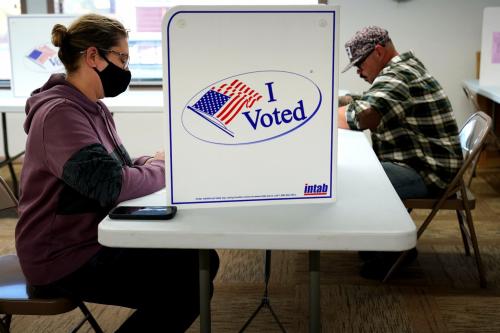Although confirmation hearings are conducted by different Senate committees filled with different interests and egos, you have probably noticed something holistic about the way senators deal with a new president’s initial slate of appointments. Perhaps the energy expended in fighting one nominee cannot be recycled. Perhaps there is a point past which opposition is perceived as obstructionism and becomes politically counterproductive.
The result is that you will get a lot of brushfires, but only one truly horrendous conflagration. Senators seem to demand that there always be one. Perhaps you should designate one of your appointees to be the sacrificial lamb so that the others can survive unscathed. (Just joking!)
This is the way it worked for two of George W. Bush’s nominees. His choice for attorney general, Senator John Ashcroft, had well-documented, deeply controversial views on abortion, gun control and the death penalty. The nomination produced weeks of anguished debate before he was finally confirmed, 58 to 42, on February 1. The brouhaha probably eased the confirmation of Bush’s candidate for interior secretary, Gail Norton, who should have been equally controversial. Environmentalists waged a fierce fight, but it had little effect on the Senate and Norton was comfortably approved, 75 to 24.
The experiences of cabinet appointees Ashcroft and Norton—being challenged on the basis of their policy beliefs rather than personal behavior—is a relatively new phenomenon, going back no further perhaps than Richard Nixon’s appointment of interior secretary Walter Hickel, a business-oriented governor of Alaska who was accused of being insensitive to conservation. The rule of thumb for that earlier time was that, given minimum ethical standards, a president was entitled to his choice, since the appointee served only at his pleasure and would not be passed on to the next president. Those were the good old days.
In response to more and more confirmation fights, a group has emerged in Washington known as the sherpas, who have turned steering nominees through the confirmation progress into a fine art. There are Republican sherpas and Democratic sherpas. It’s not exactly a club, but they are known to each other. Sign up the ones you need early.
Life would be much easier for presidents-in-transition if only their personnel selection process could test for the five criteria laid out by Pendleton James, a corporate headhunter who was in charge of recruitment for President-elect Reagan:
- Commitment to the president’s philosophy and program.
- The highest integrity and personal qualifications.
- Experience and skills that fit the task.
- No personal agenda that conflicts with being a member of the president’s team.
- The toughness needed to withstand the pressures and inducements of Washington and to accomplish the changes sought by the president.
So you follow this prescription, you think you have the person you want, and suddenly there’s a problem. Why? Most likely one of two things has happened.
Inadequate Vetting
Inadequate vetting—the failure to dig deep enough to get the troubling information—was what caused problems for President Carter (in the case of Kennedy administration veteran Ted Sorensen); President Clinton (in the case of Lani Guinier); and President George W. Bush (in the case of Linda Chavez). Nominated to be CIA director, Sorensen’s offense was that he took classified material with him when he left the White House after Kennedy’s assassination to write a book. Guinier, nominated to be assistant attorney general in charge of the civil rights division, had expressed views in her writings that were, Clinton wrote in his memoirs, “in conflict with my support for affirmative action and opposition to quotas.” He withdrew the nomination, saying he had not been aware of her views.
##1##
Chavez, nominated to be secretary of labor, had taken a battered woman into her home, an illegal immigrant from Guatemala, who did occasional chores and had been given at least $1,500. Chavez had not provided this information to Bush’s vetters or the FBI. After her name was withdrawn, Bush announced a replacement nominee just two days later. In Washington he was given more credit for acting expeditiously than blame for making a flawed appointment. It probably also helped that the new nominee (Elaine Chao) was married to a prominent Republican senator.
Insufficient Understanding of Political Risks
Not realizing or understanding the political risks of a particular nominee is what caused problems for Nixon (in the case of Dr. John Knowles, who was to be nominated as assistant secretary for health until the American Medical Association, which disliked Knowles’s support for universal health care, opposed him); President George H. W. Bush (in the case of John Tower); and Clinton (in the case of Zoë Baird).
Remember Zoë Baird, the candidate for attorney general who had employed illegal aliens as household help? Surely this belongs in the category of inadequate vetting. Not so, according to Clinton: “The employment of illegal immigrants was not that uncommon then,” he wrote in his memoirs, and Baird had not tried to conceal the information. “We had simply underestimated its significance.”
The most significant failed nomination is that of John Tower, the former senator from Texas, whom George H. W. Bush nominated to be secretary of defense. He would not fold. His nomination was not defeated until March, causing three other cabinet confirmations to be delayed.
NEXT WEEK: GETTING GOOD PRESS, AVOIDING BAD PRESS



Commentary
What Now? Confirmation Battles
December 19, 2008